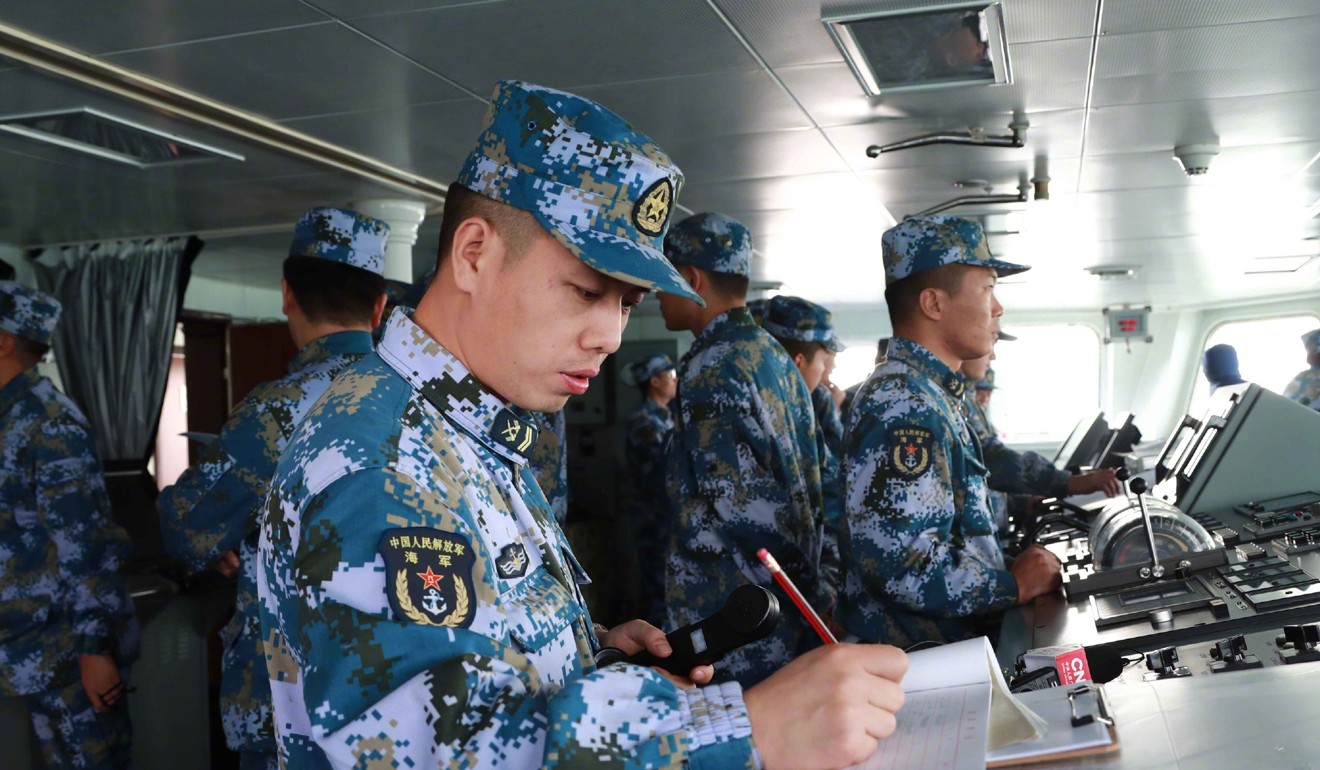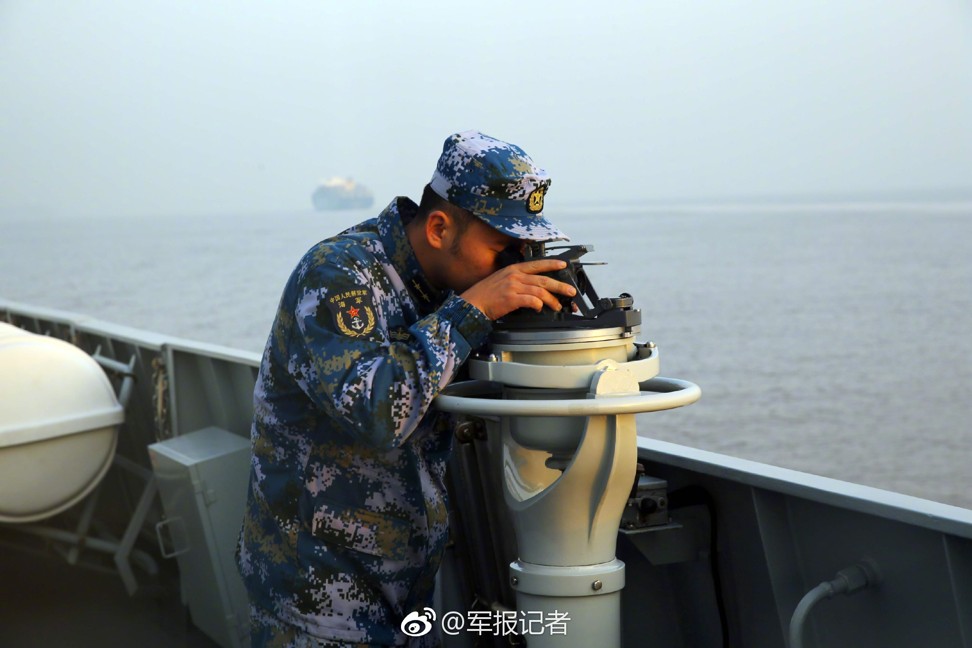
China’s navy puts on show of strength for North Korea ... and United States’ east Asia alliance
Exercise in East China Sea designed to demonstrate navy’s anti-missile and emergency response capabilities, military says
More than 40 warships from China’s navy took part in a major exercise in the East China Sea on Thursday, just days after reports that the country’s air force had carried out similar high-level drills, and as tensions remain high over the North Korean nuclear crisis.
The vessels, from the North Sea, East Sea and South Sea fleets, demonstrated the navy’s growing anti-missile and emergency response capabilities in “all-weather conditions”, according to a report published on its website.

Military experts said the air- and seaborne exercises were evidence that all divisions of the People’s Liberation Army were boosting their combat readiness.
On Monday, air force spokesman Shen Jinke announced that Chinese aircraft recently conducted drills over the Yellow and East China seas near the Korean peninsula using “routes and areas it has never flown before”.

Shen did not say exactly when the drills took place, though the timing of the announcement coincided with the start of a five-day exercise by US and South Korean forces. The massive operation, the largest ever held by the two countries, featured about 230 aircraft – including F-22 Raptor stealth jet fighters – and tens of thousands of troops.
The US-South Korea exercise was launched in response to North Korea’s latest intercontinental ballistic missile test on November 29, and claims from Pyongyang that it now has the capabilities to reach any part of the United States.
China’s navy said that Thursday’s drill was conducted as “an assessment competition” simulating “real warfare” and was designed to test the performance and interception capabilities of its guided-missile frigates.
During the exercise, warships were required to deal with repeated “multi-target missile attacks” at “extremely low altitude”, the website report said.
The accompanying photographs showed a Type-056 Huaian frigate firing a rocket to take down a missile launched by a “rival” Type-052D Putian warship. Type 054 Changzhou frigates were also involved in the drill.
In the interests of transparency, the navy said the “battles” were monitored and judged by navy instructors, and experts from naval academies and military science institutes, with the help of devices fitted to the missiles used in the drills.
Song Zhongping, a retired instructor at the PLA’s Second Artillery Corps – the predecessor to the current Rocket Force – said the exercise showed that China was determined to boost its anti-missile capabilities, both on land and at sea.
“The United States’ missile systems are mostly sea-based, which has been central to its ability to expand its influence overseas,” he said.
China was keen to test its naval missile defence capabilities as the North Korean nuclear crisis had highlighted the limitations of its land-based defence systems, Song said.
In September, South Korea deployed the United States’ THAAD (Terminal High Altitude Area Defence) anti-missile system. The PLA expressed its concern at the time, saying it moved the US, South Korea and Japan one step closer to creating a “mini Asian version of Nato” to counter China in the region.

“The North Korea nuclear crisis has resulted in several [of China’s] neighbouring countries, including North and South Korea, and Japan having guided missiles ... In other words, whoever owns nuclear weapons is a security threat to China,” Song said.
“In the interests of combat readiness, it is necessary for China to conduct more anti-missile drills on land, air and sea in all-weather conditions.”
Hong Kong-based military expert Liang Guoliang said the images posted on the navy’s website showed warships testing the PLA’s advanced HHQ-10 anti-missile system, which was on a par with the United States’ Rolling Airframe Missile system.
In staging its latest naval and air force drills China was sending a clear signal to the US, South Korea and Japan, which have been conducting joint exercises in the region for several months, he said.
“There is a clear political message Beijing wants to deliver to the US, South Korea and Japan that the PLA’s training will continue as long as those three continue their joint drills in the region,” he said.


